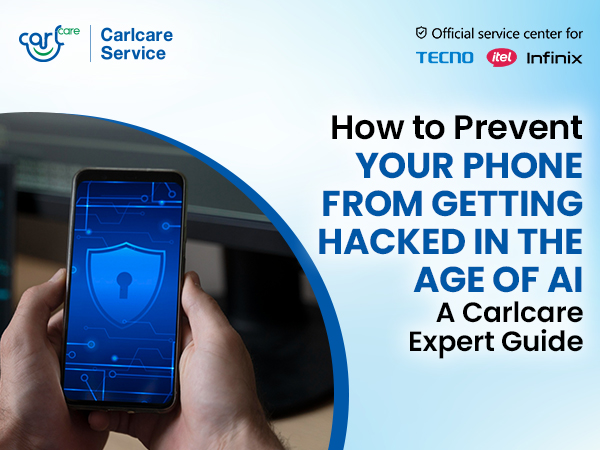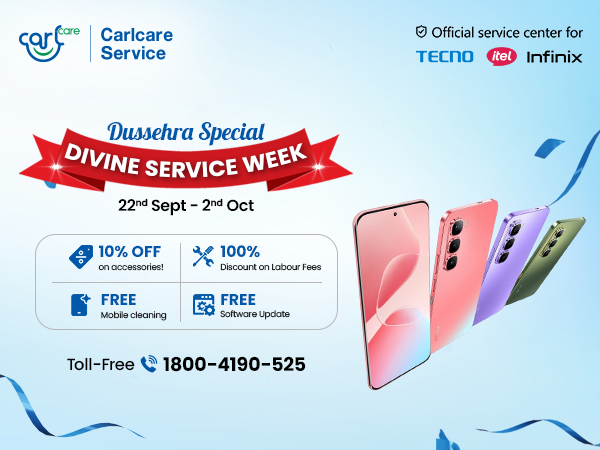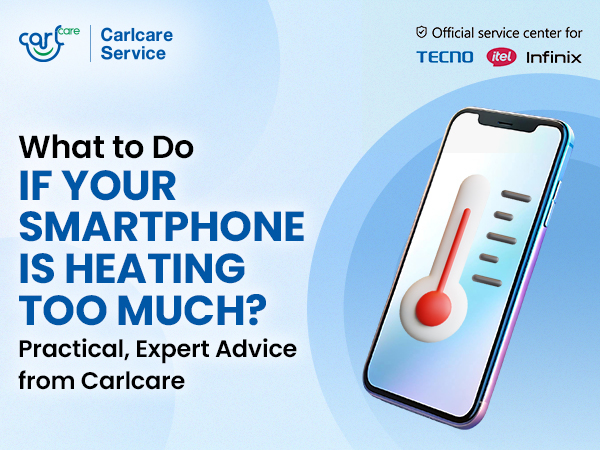
With the increasing reliance on smartphones, ensuring your device stays charged is more important than ever. However, many myths and misconceptions surround smartphone charging, often leading to unnecessary worries and even harmful practices. As the official service provider for TECNO, itel, and Infinix, we’re here to set the record straight. Let’s explore and debunk some of the most common myths about smartphone charging.
Understanding these facts about smartphone charging can help you make better decisions for your device's longevity and performance. At Carlcare, we are committed to providing you with accurate information and top-notch service for your TECNO, itel, and Infinix smartphones.
Myth 1: Using a Duplicate Charger Will Not Harm Your Phone Battery
The Myth: Many people believe that there’s no harm in using any local or duplicate charger to power their smartphones, thinking that as long as the phone is charging, the charger is doing its job.
The Reality: In reality, using a duplicate or low-quality charger can indeed damage your phone’s battery and reduce its lifespan. Not only can it take significantly longer to charge your phone, but it can also lead to overheating, inconsistent charging, and in some cases, even permanent damage to your device.
Explanation: Duplicate chargers are often manufactured without adhering to the safety and quality standards that official or certified chargers must meet. These chargers might deliver inconsistent voltage and current, which can strain the battery and cause it to degrade more quickly over time.
One of the biggest risks of using a counterfeit charger is overheating. Because these chargers are not designed with proper safety mechanisms, they can cause your phone to heat up excessively while charging. Overheating is a major enemy of battery health, as it accelerates wear and can lead to swelling or, in extreme cases, even battery failure.
Additionally, duplicate chargers often lack the fast-charging technology that your phone’s original charger provides. As a result, you might notice that it takes much longer to charge your phone with a knock-off charger, which can be inconvenient and frustrating. Worse, the slow and erratic charging process can lead to incomplete charging cycles, further reducing the battery’s overall efficiency and lifespan.
Carlcare Recommendation: To ensure the long-term health of your phone’s battery, always use the charger that came with your device or invest in a certified replacement from a reputable brand. If you’ve misplaced your original charger, it’s worth purchasing an official or certified charger that matches your phone’s specifications. For your TECNO, itel or Infinix phone, get an original charger from your nearest Carlcare Service center. You can visit the center directly or can book online reservation at our website or app.
Myth 2: Charging Overnight Will Overcharge and Damage the Battery
The Myth: It’s a common belief that leaving your phone plugged in overnight will overcharge the battery, causing damage or reducing its lifespan.
The Reality: Modern smartphones are equipped with smart charging technology that automatically stops charging once the battery reaches 100%. This means that even if your phone remains plugged in overnight, it will not continue to receive a charge beyond what it needs.
Explanation: Lithium-ion batteries, which are used in most smartphones today, are designed to handle being connected to a charger for extended periods. Once the battery reaches full capacity, the charging circuit inside the phone cuts off the power to prevent overcharging. The phone might trickle charge (occasionally topping up the battery) if the level drops slightly, but this is controlled to avoid any significant stress on the battery.
Carlcare Recommendation: It’s generally safe to charge your phone overnight, but if you want to maximize battery longevity, try to unplug it when it’s fully charged. Additionally, charging your phone in a cool, well-ventilated area can prevent any potential overheating.
Myth 3: Letting Your Battery Completely Drain Before Charging is Good
The Myth: Many users believe that you should let your smartphone battery completely discharge before plugging it in to charge, as this supposedly helps to “reset” the battery.
The Reality: While this advice was relevant for older nickel-based batteries, it is not applicable to the lithium-ion batteries used in modern smartphones.
Explanation: Lithium-ion batteries perform best when they are kept between 20% and 80% charge. Completely draining the battery on a regular basis can actually reduce its overall lifespan. This is because deep discharges can strain the battery, leading to increased wear and tear. Similarly, regularly charging to 100% can also cause long-term wear if done frequently.
Carlcare Recommendation: To prolong your battery’s life, avoid letting it drop below 20% and try not to charge it to 100% too often. Occasional full cycles (from 0% to 100%) are okay, but they should not be a regular practice.
Myth 4: Using Your Phone While Charging Will Damage the Battery
The Myth: Some users avoid using their phones while they are charging, fearing that this practice could harm the battery or cause the phone to overheat.
The Reality: Using your phone while it’s charging is generally safe, and it will not damage the battery. However, it may cause the phone to charge more slowly.
Explanation: When you use your phone while it’s charging, particularly for resource-intensive tasks like gaming or video streaming, the device may heat up due to increased processor activity. While this can cause the phone to charge slower and potentially feel warmer to the touch, it does not directly damage the battery.
However, consistent use of the phone under high load while charging can cause thermal stress, which, if done excessively over time, could contribute to battery degradation.
Carlcare Recommendation: It’s safe to use your phone while charging, but for the best charging efficiency and battery health, it’s better to let your phone charge uninterrupted, especially if you’re doing something that generates a lot of heat.
Myth 5: Fast Charging is Bad for Your Battery
The Myth: Fast charging is often perceived as harmful, with some believing it reduces battery lifespan due to the increased energy flow.
The Reality: While it’s true that fast charging generates more heat than standard charging, modern smartphones and chargers are designed to manage this heat effectively. Fast charging technology is optimized to safely handle the higher power levels.
Explanation: Fast charging operates in two stages: the first stage quickly charges the battery up to a certain percentage (usually 50-70%), and then it slows down to protect the battery as it reaches full capacity. The heat generated during fast charging is a concern, but smartphones are equipped with thermal management systems to ensure temperatures remain within safe limits.
Carlcare Recommendation: If your phone supports fast charging, it’s perfectly safe to use it. To reduce heat, consider removing any heavy or insulating phone case during charging and avoid using your phone for demanding tasks while it charges.
Myth 6: Closing All Background Apps Saves Battery Life
The Myth: Some users believe that closing all background apps will save battery life and improve charging speed.
The Reality: While closing unused apps may seem like a way to conserve battery, it often has the opposite effect. Modern smartphones are designed to efficiently manage background processes, and constantly closing apps can actually drain more battery.
Explanation: When you close an app and then reopen it later, your phone has to use more energy to relaunch it from scratch than it would have if the app had remained in a suspended state. Operating systems like Android and iOS are optimized to manage resources efficiently, meaning they can pause background apps without consuming significant power.
Carlcare Recommendation: Rather than obsessively closing apps, focus on optimizing settings like screen brightness, disabling unnecessary notifications, and using power-saving modes. This will have a more significant impact on battery life than closing apps.
Myth 7: Charging Your Phone Through a Laptop or Power Bank Will Damage the Battery
The Myth: Some people believe that charging a smartphone through a laptop USB port or a power bank can harm the battery or provide insufficient power, leading to issues over time.
The Reality: Charging through a laptop or a power bank is generally safe and will not damage your battery, though it may charge more slowly compared to using a wall charger.
Explanation: Laptop USB ports typically provide less power than wall chargers, resulting in slower charging. However, this slower charge rate is not harmful to your battery. Similarly, power banks are designed to be compatible with a wide range of devices, including smartphones. The only caveat is to ensure that your power bank is of good quality and can supply the appropriate voltage and current for your device.
Carlcare Recommendation: Feel free to use a laptop or power bank to charge your phone when necessary. Just be aware that charging may take longer, and as always, use reputable, high-quality accessories to avoid any potential issues.

















